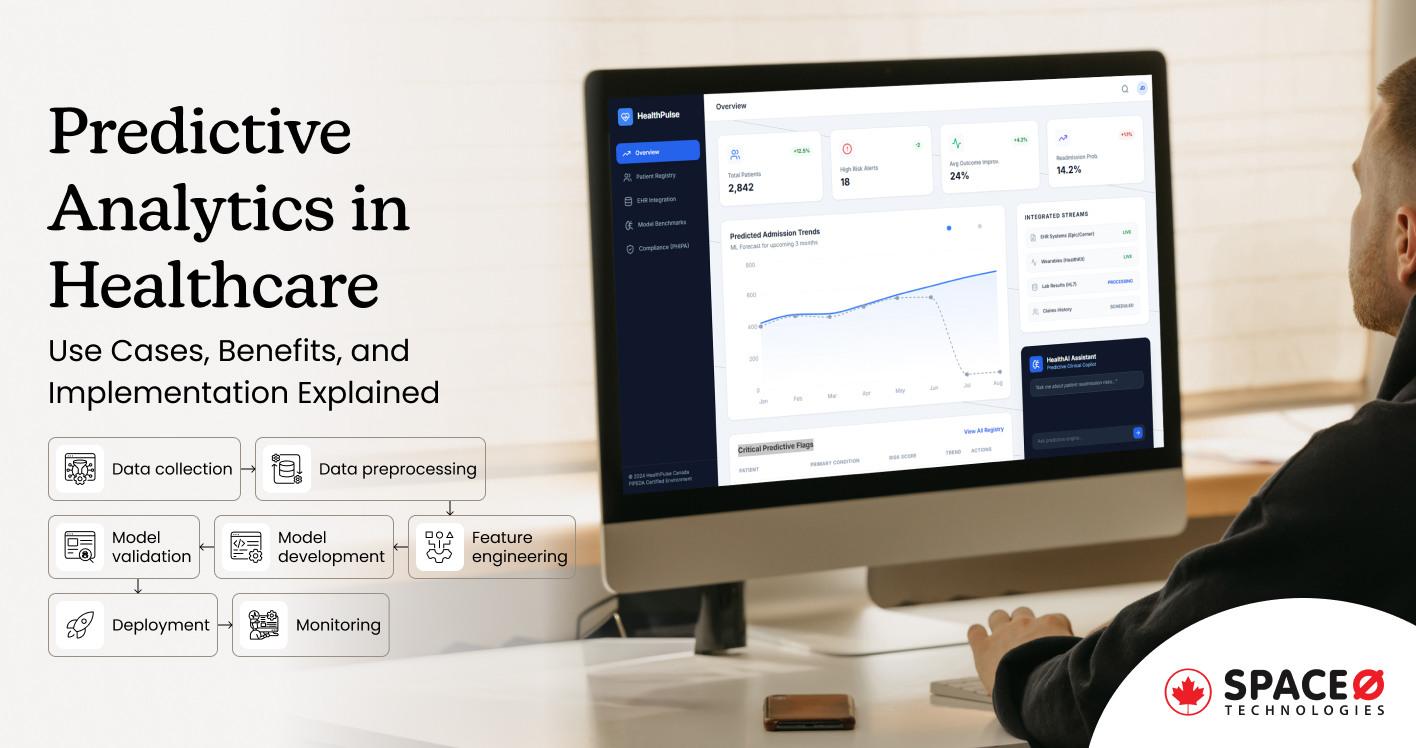Trusted by Leading Brands
Software Development Services We Offer
With 7+ years of experience delivering custom software solutions and AI based applications to Fortune 500 companies, we are the one-stop solution for every software development requirement. Discover the diverse array of software development and AI services we provide and kickstart a journey full of innovation with us.
Custom Software Development
Our expert software developers help you build your dream software solution for any device and OS. We specialize in traditional software development and modern AI-powered solutions with machine learning and automation. We work closely with you throughout the development process to deliver a solution that perfectly matches your vision.
Software Development Consulting
Do you need a strategic roadmap or technical guidance for your software or AI project? We offer a free consultation to understand your requirements and goals. We provide our clients with a road map, recommend appropriate tech stack including AI frameworks, and help with features and cost estimation.
AI-Based Software Development
We provide comprehensive AI development services, from machine learning models to intelligent automation. With expertise in Python, TensorFlow, PyTorch, and cloud platforms, our AI specialists help you build scalable solutions that transform business processes and unlock data insights within your budget.
Enterprise Software Development
We build robust, scalable enterprise solutions for complex business operations and high-volume transactions. Our services include ERP systems, CRM platforms, supply chain management, and custom applications tailored to your workflows. With expertise in microservices architecture and cloud-native development, we create secure, compliant solutions that integrate seamlessly with your existing infrastructure and scale as your business grows.
SaaS Software Development
We build cloud-based SaaS applications that deliver exceptional user experiences and drive business growth. Our SaaS development services cover everything from initial concept and architecture design to MVP launch and continuous iteration. With expertise in multi-tenant architecture, API development, and cloud platforms like AWS, Azure, and Google Cloud, we create scalable solutions that support thousands of users while maintaining the performance.
ERP Software Development
We develop comprehensive ERP systems that unify your business operations across finance, inventory, procurement, HR, and manufacturing into a single integrated platform. Our custom ERP solutions are designed to streamline workflows, eliminate data silos, and provide real-time visibility into every aspect of your organization. With expertise in modular architecture, we build flexible ERP systems that can be tailored to your specific industry requirements and scale with your business growth.
Hire Software Developers
Want to develop software, enhance existing software, build AI solutions, integrate AI capabilities or solve complex technical challenges. Hire our top software and AI developers on a flexible basis. Our certified developers deliver high-quality, scalable, and reliable software solutions.
Mobile App Development
We provide native iOS, Android, and cross-platform app development services. With expertise in Swift, Kotlin, React Native, and Flutter, our mobile app developers can help you build a fast, secure, and user-friendly app in minimal time within your budget.
Odoo Development
We provide end-to-end Odoo development services, from consulting and integration to migration and intelligent custom app development. Our certified Odoo specialists build secure, cost-effective AI-powered solutions that automate workflows and simplify work management.
Emerging Technologies We Use to Develop Custom Software Solutions
We integrate modern technologies into our software to create intelligent, future-ready solutions that give your business a competitive advantage.
AI (Artificial Intelligence)
We build custom AI-powered applications, including intelligent chatbots, automated workflow systems, predictive analytics dashboards, and recommendation engines that optimize business operations and customer engagement.
ML (Machine Learning)
Our developers create machine learning models for demand forecasting, fraud detection systems, customer behavior analysis, price optimization algorithms, and automated decision-making platforms for enterprise clients.
Computer Vision
We develop image recognition software for quality inspection, facial authentication systems, automated content moderation, object detection applications, and visual analysis tools for manufacturing and retail industries.
Software Solutions We Specialize In
From automating workflows to managing complex data, we develop software solutions that solve real business challenges
ERP Software
We build comprehensive ERP systems integrating financial accounting, inventory tracking, procurement workflows, production planning, and real-time reporting dashboards for streamlined enterprise operations and enhanced decision-making.
CRM Software
Our CRM solutions feature lead scoring, sales pipeline automation, customer communication tracking, marketing campaign management, and performance analytics to maximize conversion rates and revenue growth.
HRMS Software
We develop HRMS platforms with employee onboarding, automated payroll processing, attendance management, performance review systems, recruitment portals, and workforce analytics for optimized human resource operations.
SCM Software
Our SCM software includes supplier portal integration, automated inventory replenishment, logistics tracking, demand forecasting algorithms, and procurement automation to optimize supply chain costs and efficiency.
SaaS Solutions
We create multi-tenant SaaS platforms with subscription billing, user role management, API integrations, automated scaling, data security protocols, and analytics dashboards for sustainable recurring revenue.
eCommerce Solutions
We build eCommerce platforms featuring product catalog management, secure payment processing, inventory synchronization, order fulfillment automation, customer account dashboards, and sales analytics for online retailers.
Software Projects We’ve Built
-

MenuSnap: AI-Driven Food Photo Editor for Delivery Apps
Want to make your menu stand out on delivery platforms? MenuSnap is an AI-powered food photo editor designed by Space-O Technologies to transform your menu images into visual masterpieces.
-

SkillHub: Canada’s First Professional Networking Platform
SkillHub is Canada’s dedicated professional networking platform, empowering job seekers, service providers, and mentors to build meaningful connections.
-

Infographic Maker Like Canva
If you are looking to create a web-based infographic solution like Canva, check this case study. Our React JS developers have created it from scratch.
Client Testimonials
Project Summary
Custom Software Development for Medical Devices Company
Space-O Technologies develops a custom software system for a medical devices company. The team has integrated the system with the client's existing processes and implemented encryption and security protocols.
View All →Project Summary
Custom Platform Development for Medical Device Co
Space-O Technologies has developed a custom platform for a medical device company. The team has built a UI, integrated a backend system, and incorporated workflow tools for project management.
View All →Project Summary
Software Dev for Map-Based Dispatch Solutions Provider
Space-O Technologies has developed an MVP for a map-based dispatch solutions provider's product. The team has built a map-based dispatch system using Google Maps, accessible through web and native mobile apps.
View All →Project Summary
Custom Software Dev for Education Solutions Initiative
Space-O Technologies has built custom software for an education solutions initiative. The team has worked on features such as offline functionality, personalized learning paths, and progress tracking.
View All →Project Summary
Booking Platform Dev for Recovery Facility Marketplace
Space-O Technologies has developed a digital booking platform for a recovery facility marketplace. They've built a platform that connects users with vetted recovery facilities, retreats, and activity hosts.
View All →We Build Software for These Industries
Software Development Process We Follow
Analysis and Planning
1
One of our sales representatives will connect to understand your requirements and business goals. Then, we assign a team that analyzes your project’s aspects in detail to create the right digital product. This team also lays the groundwork for your project by planning resource allocation, cost estimation, and scheduling.
Design and Prototyping
2
The design team then proceeds with prototypes and design by implementing the UI/UX plan and guidelines. Our design experts will ask for your corporate logo, color, and image preferences to ensure your product design resonates with your brand identity. The team will create the final wireframe, a functioning prototype, and a UI/UX design for your final approval.
Software Development
3
This is the most crucial and longest step in the product lifecycle. Our expert team of developers builds a clean and efficient product based on the software design documentation, ensuring we meet all your needs. We also promise complete transparency throughout the process and ensure you are informed of all the progress and milestones attained.
Quality Assurance
4
We assure you of quality before delivering your software solution with all the essential features and functionalities your business needs. We consider it our duty to deliver a product that functions seamlessly. Our expert QA team conducts in-depth product and software testing to remove bugs and glitches and make the solution secure and ready for deployment.
Deploy Software Product
5
After tracking and fixing the bugs in the developed software product, we release the working solution to production. Our technology partner will push the code to the users and ensure a smooth product launch and successful business operations. Our team will monitor the deployment process to ensure the live software functions optimally.
Maintenance and Updates
6
As the end users start using your solution, frequent updates and security maintenance become a must to ensure the software remains bug-free and user-friendly. Our tech team offers post-deployment support to scale and update your product functionalities based on user feedback and data analytics.
Our Journey In Numbers
100+
Happy Clients Worldwide
300+
Successful Projects
65%
Repeated & Referral Business
Technology Stack We Use
Frontend
Backend
Frameworks
Database
Web Server
FAQ’s About Software Development
How much does it cost to develop a software solution?
The total development cost for a software solution can range from $50,000 to $250,000+, depending on the software’s complexity. To learn about the exact cost of your software, book your free consultation, and our experienced software consultant will guide you and provide the proper estimate for your project.
How much time will it take to develop software from scratch?
Software development from scratch, on average, takes from 4 to 12 months. The overall development time largely depends on the type, size, and complexity of the software solution needed. Connect with us to get the right timeline estimate for your software project.
Can you integrate AI capabilities into my existing software systems?
Yes, we specialize in seamlessly integrating AI features into existing software systems without disrupting your current operations.
Whether it’s adding smart analytics to your CRM, implementing automated workflows in your ERP, or enhancing your mobile app with AI-powered features, we ensure smooth integration through APIs and custom development that works with your current technology stack.
Can you upgrade my legacy system with modern AI capabilities?
Yes, we specialize in modernizing legacy systems by integrating AI capabilities without requiring a complete rebuild.
We analyze your existing architecture and identify integration points for AI features like automated decision-making, predictive insights, and smart workflows.
Our gradual implementation approach ensures minimal downtime while maintaining data integrity and seamless operation with your current systems.
How will you secure my software project information?
One of the most important measures we take to secure your software project information is signing NDAs, which guarantees that our team will do their best to protect it. In addition to signing an NDA, we apply network security measures and conduct regular virus scans to prevent unauthorized access and data breaches.
Do you provide documentation once the software is developed?
Once the software is developed, we provide software requirement specifications (SRS). The main goal of our SRS is to provide guidelines about what the software will do and how it will be expected to perform. It outlines your project’s purpose, features, and functionalities needed to fulfill your needs.
Who owns the right to the software code?
As it is your software project, you will get full ownership of your source code. We sign a legal agreement that states that source code is your intellectual property, which we hand over to you after software deployment. We ensure that you own the final version of the source code, and we do not owe any rights to your source code once it is deployed.
What if there is a change during the development phase?
As it is your idea and your project, we cater to any of your change requests. You just need to specify the changes you want to your allocated project manager. Before executing any changes, we will conduct meetings to get your approval and ensure that project development goes in the right direction.
How will you update me on the project’s progress during the software development cycle?
Your feedback is important to us as it helps us achieve the expected outcome. So, to ensure that you are involved in the project, we assign a project manager who will be your single point of contact. We set up weekly/monthly meetings to discuss the project’s progress and the upcoming milestones. Basecamp, Microsoft Teams, Skype, Slack, Zendesk, ClickUp, Notion, and Jira are some tools we use for client communications.
Do you provide maintenance support post-project deployment?
Yes, we provide 3 months of maintenance support for your software project. Although we perform all the tests before deploying any solution, errors and loopholes can arise once the project goes live. To ensure your project works smoothly, we track the interactions and resolve errors as they emerge. During the maintenance period, you can contact us anytime for any help.
Can you provide a brief description of your hiring models?
Yes, we provide three hiring models: full-time, part-time, and hourly. The full-time model boasts full-time developer availability (160 hours/month) and is suitable for enterprise and mid-size projects. Meanwhile, the part-time and hourly hiring models are ideal for start-ups and mid-size projects. Part-time models offer 80 hours/month of developer availability, while for hourly models developer availability depends on the client’s availability.
How is Space-O different from other software app development companies?
Space-O is a leading software development company, with experience serving 100+ clients and Fortune 500 companies representing various industries. What makes us different is our experience of serving various industrial niches and the in-depth technical & domain expertise we’ve gained with it. This expertise makes it easier for us to cater to your requirements within your budget.
Our Software Development Blogs
-

Predictive Analytics in Healthcare: Use Cases, Benefits, and Implementation Explained
Are you sitting on years of patient, clinical, and operational data—but still reacting to problems after they occur? You’re not alone. Many healthcare organizations collect vast amounts of data every day, yet struggle to use it when decisions matter most. That gap is why predictive analytics in healthcare is gaining rapid adoption. According to Global…
-

How to Build a Personal Finance App: Complete Guide
Thinking of building a personal finance app? You’re entering a fast-growing market where users actively look for better ways to manage, track, and plan their money. As financial habits evolve, the demand for simple, trustworthy finance tools continues to rise.The opportunity is massive. According to Business Research Insights, the global personal finance app market is…
-

A Complete Guide to Doctor Appointment App Development
Ever waited on hold for 20 minutes to book a doctor’s appointment—only to hear there’s no availability for weeks? Now imagine booking the same appointment in under two minutes, anytime, from anywhere. That convenience defines doctor appointment apps. Doctor appointment app development is reshaping healthcare by removing scheduling friction for patients and providers. Patients book…
All our projects are secured by NDA
100% Secure. Zero Spam
*All your data will remain strictly confidential.
Trusted by


Bashar Anabtawi
Canada
“I was mostly happy with the high level of experience and professionalism of the various teams that worked on my project. Not only they clearly understood my exact technical requirements but even suggested better ways in doing them. The Communication tools that were used were excellent and easy. And finally and most importantly, the interaction, follow up and support from the top management was great. Space-O not delivered a high quality product but exceeded my expectations! I would definitely hire them again for future jobs!”

Canada Office
2 County Court Blvd., Suite 400,
Brampton, Ontario L6W 3W8
Phone: +1 (437) 488-7337
Email: sales@spaceo.ca
